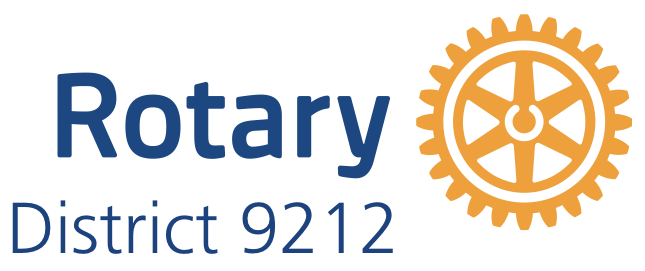Environment Conservation through ADOPTING- a- River

Wetlands are crucial to maintenance of the water cycle and provision of water-related ecosystem services. Urban wetlands are among the most threatened in Kenya. This is due to their direct conversion into built up areas (either planned or unplanned). This has led to acute pollution related problems including uncontrolled domestic and industrial discharges; and irresponsible dumping of commercial, municipal and institutional wastes
Nairobi River, flowing through Kenya’s capital city, provides an excellent example of a heavily polluted river.
Fish and other aquatic life used to thrive here. Not anymore.
Today, the smelly sludge that is the Nairobi River would hardly pass for water. It is dark, oily, putrid and the most abused water system in the region.
How Nairobi River was deliberately poisoned is contained in reports on the early sanitation of the emerging town — with warnings that a bad precedent was being set by allowing raw sewage into the crystal waters close to the emerging city.
Pollution of the Nairobi River (Kenya) has gone on unabated for 75 years. But prior to the Second World War the pollution most likely would have been organic material and railroad oil waste. After the Second World War pollution become a complex mixture of urban sewage, industrial effluents and surface runoff containing large amounts of silt.
There have been several initiatives by government and non-governmental organizations but to date, none has been successful in making significant progress due to underfunding, poor coordination and lack of unity of purpose among others.
Several proposals were raised during the undertaking of trying to restore the river to a clean state including;
- Identification and sustainability addressing sources of pollution
- Reclaiming riparian land
- Initiating landscape management activities e.g. growing indigenous trees
- Better management of industrial waste
- Proper solid waste management e.g. setting up a landfill, which is lined at the bottom to prevent ground water pollution and has a system able to capture biogas
- Setting up of sanitation facilities in the informal settlements
- Sensitization of the residents along the river the importance of keeping the river in a clean state
Rotary District 9212, in close collaboration with the the United Nations Environment Programme, formalized an initiative to restore inland fresh water ecosystems in the region. This was done through an ambitious project dubbed the “Adopt-a-River” initiative for Sustainable Development.
The Adopt-a-River Steering Committee (which comprises of both Rotary and UN Environment officials) was thereby created to support clubs in this initiative. The committee constituted o the following members:
Janet Kabeberi-Macharia – District Environment Chair
Jane Maonga – ARI Sub-Committee Chair
Margaret Kariuki – ARI Chair, Eastern/ Nairobi regions
Mburu Machua – ARI Chair, Central/ Rift regionsSEE ALSO
Erick Ndenga – ARI Chair, Western region
Duncan Mwanyumba – ARI Chair, Coastal region
Initially, the project focused on the Athi River basin due to its connection to the Indian Ocean and the fragile marine ecosystem further downstream. Geographically, Athi River basin (including its tributaries), cuts across several counties including: Nairobi, Kiambu, Kajiado, Machakos, Tana River, Mombasa, Kwale and Kilifi – with a total of 65 Rotary clubs falling within these areas.
Following this initiative, 5 Rotary Clubs under this target area, came together to join forces in the adopt-a-river initiative.
The five clubs are as follows:
- Rotary Club of Thika
- Rotary Club of Thika West
- Rotary Club of Nairobi – Thika Road
- Rotary Club of Ruiru
- Rotary Club of Murang’a
Rotary Club of Ruiru President Elect, Mburu Macua was tasked with leading the initiative, perhaps owing to his passion in environment matters. Through his guidance, a team comprising of Rotarians from the 5 clubs, rotaractors and volunteers, was setup and has been spearheading the initiative.
The taskforce decided to work with small community groups that already existed in the areas of Korogocho and Dandora to achieve its mandate. The community groups comprised of residents living near the river and hence had a first-hand account on how the pollution unravels.
The community expressed their commitment to work the Rotarians and Rotaractors to ensure the Nairobi River regained its lost glory.
During this month’s visit on 1st and on 8th February by the taskforce comprising of all the 5clubs, we discovered that one community group had undertaken a project of growing kales. This was a conservation project as well as an income generating project
This project aims at upholding cleaning and conservation measures to plant indigenous trees along the river to cushion it from erosion.
Most groups have already set the pace in cleaning the river banks and engaging themselves in other activities aimed at cleaning the polluted river.
Despite the huge strides taken by the “Adopt-a-River” initiative by the 5 Rotary Clubs (RC Thika, Thika West, Nairobi – Thika Road, Ruiru and Muranga), lot needs to be done to save the river from pollution. A passionate appeal is made to Rotarians and Rotaractors from various clubs, volunteers and the public at large to join effort in achieving this noble initiative
We all have a responsibility towards conserving aquatic biodiversity and implicitly, contributing towards a better environment for the future generation
Article by Peter Marai | Rotaract Club of Ruiru







